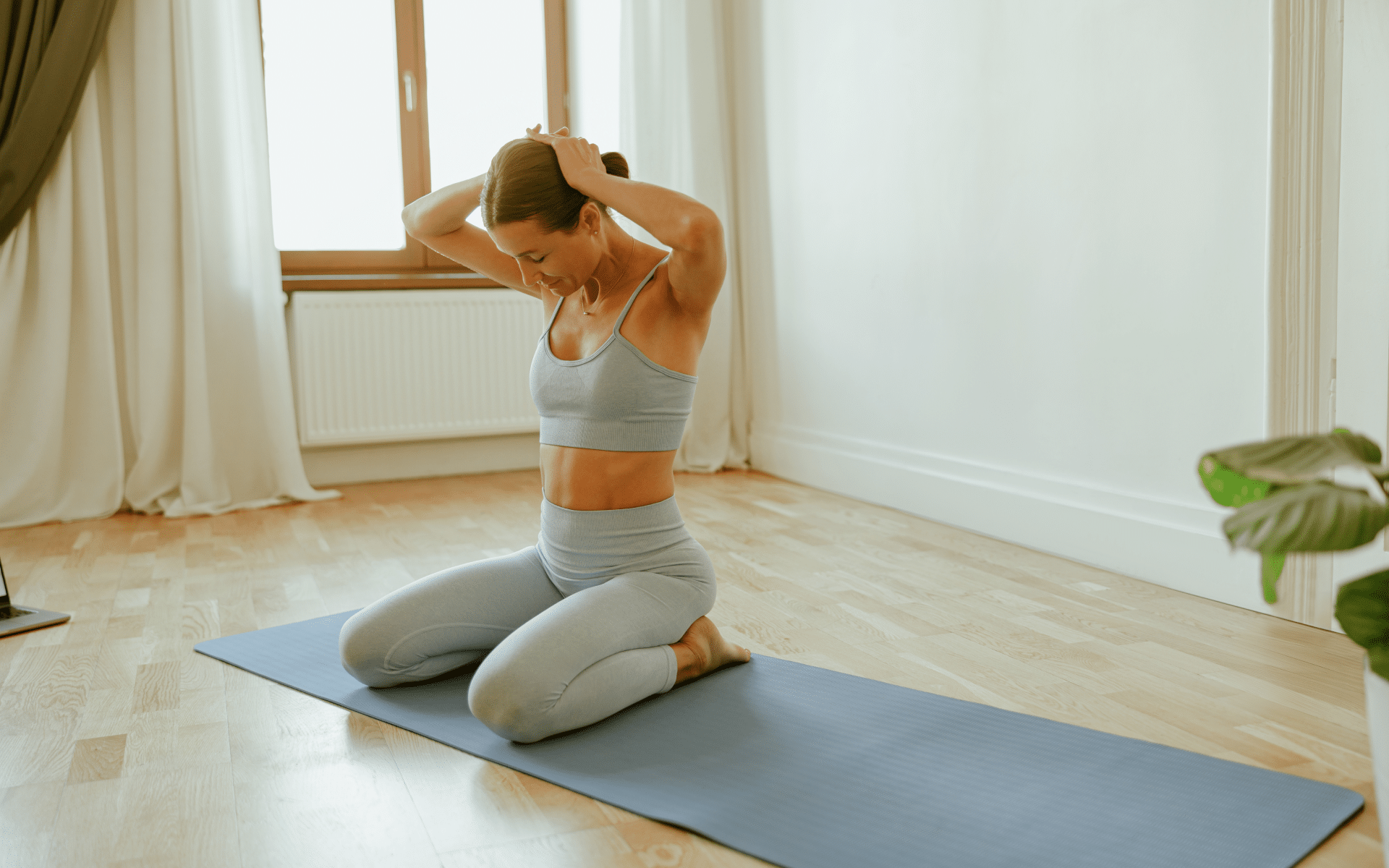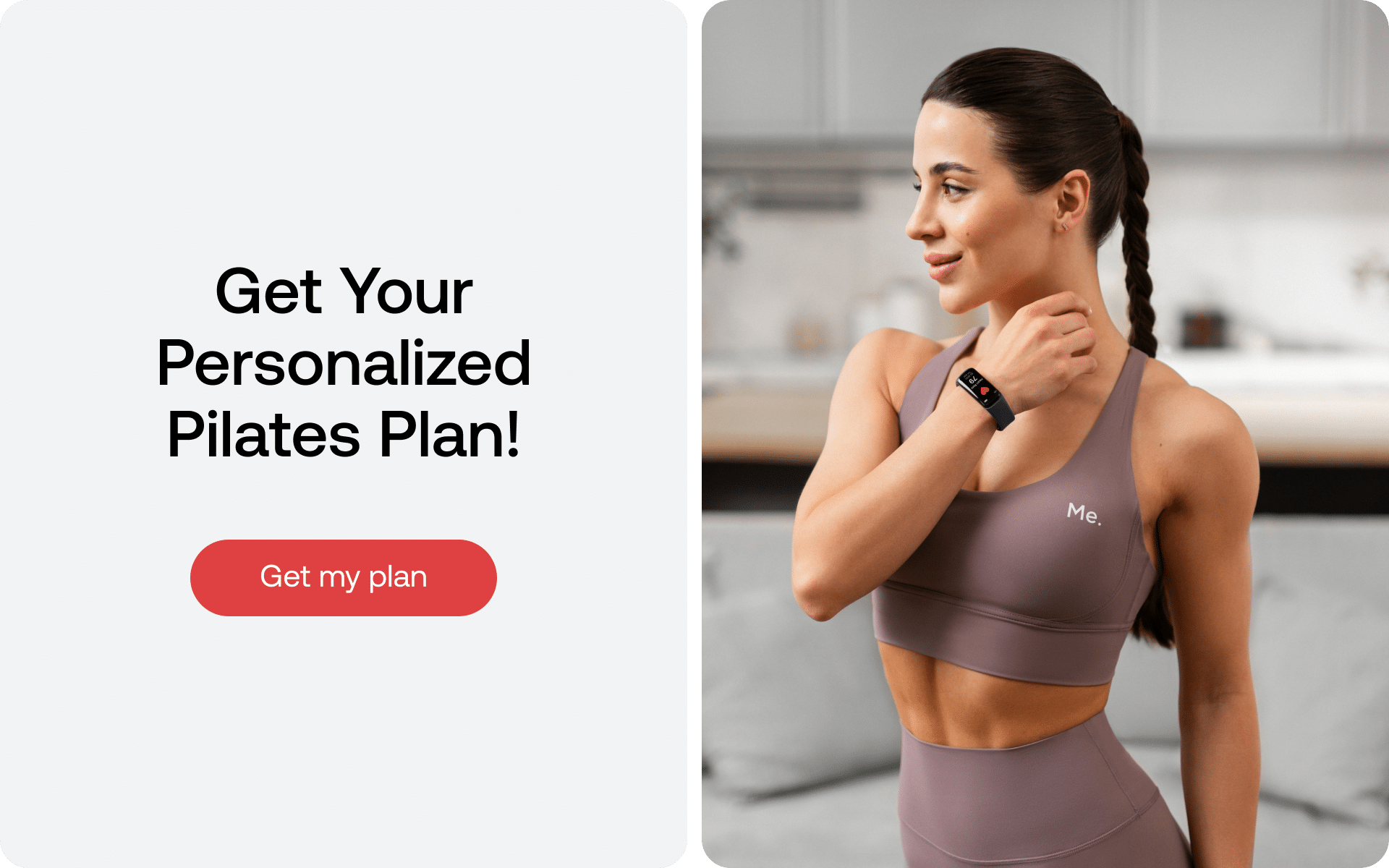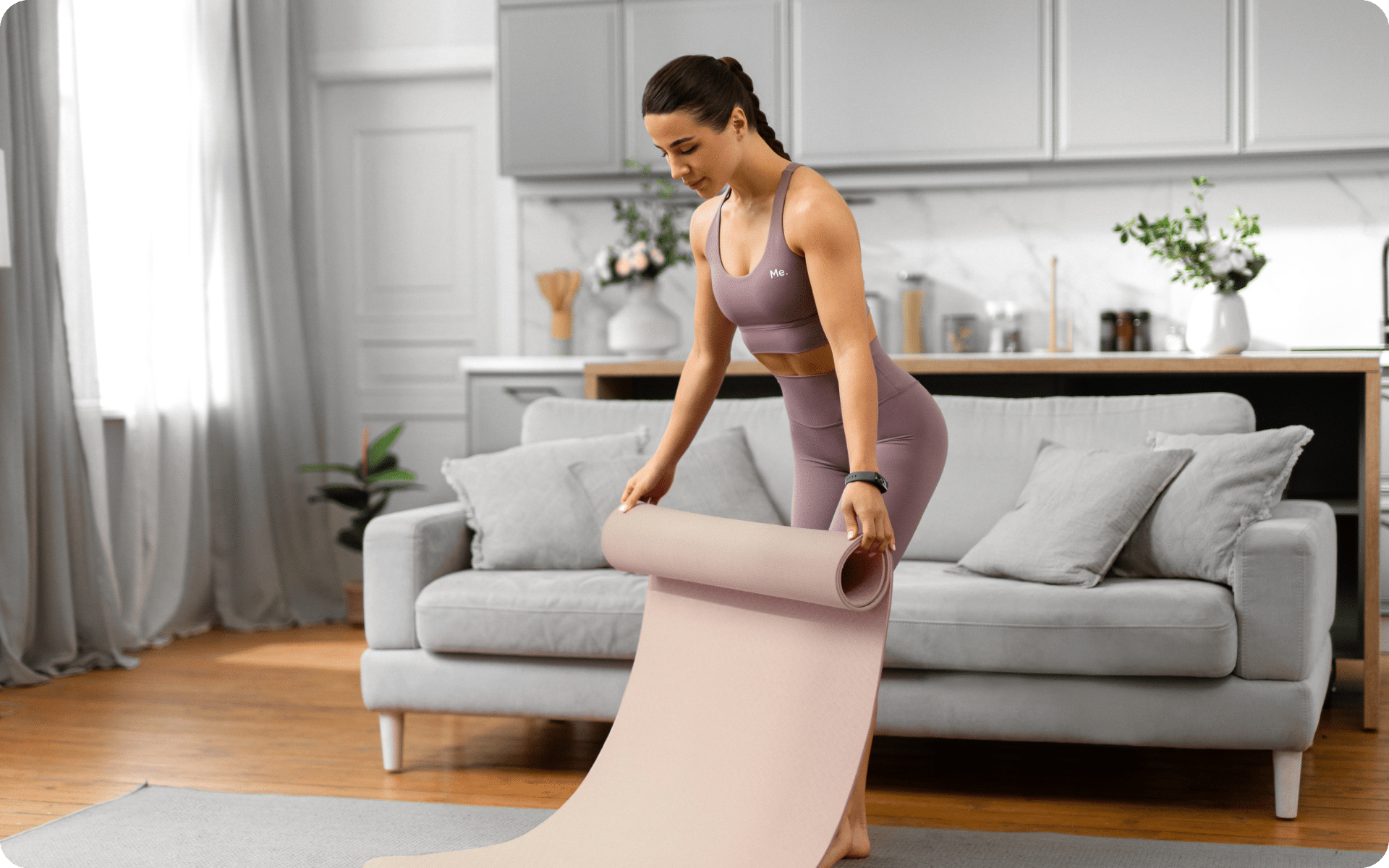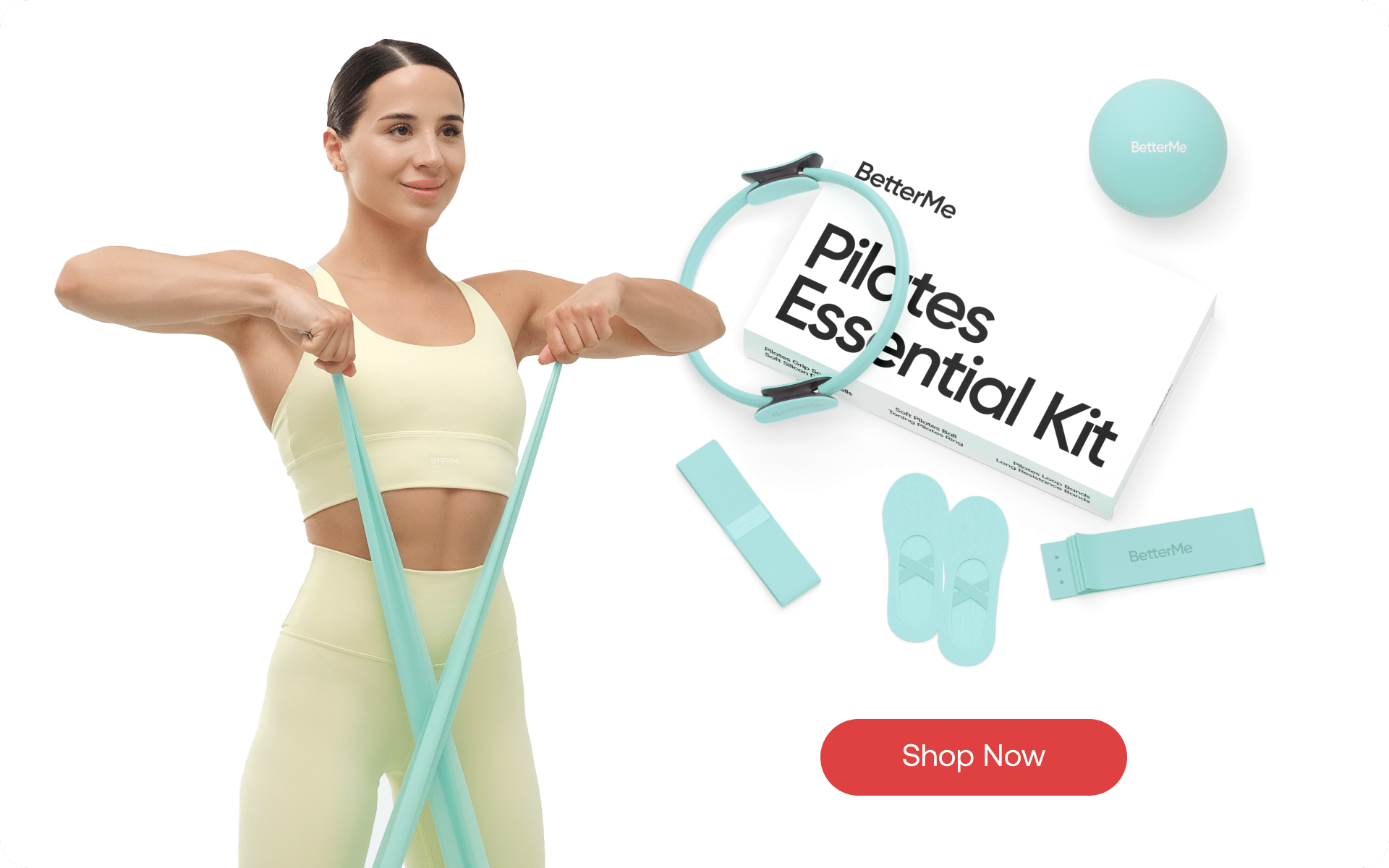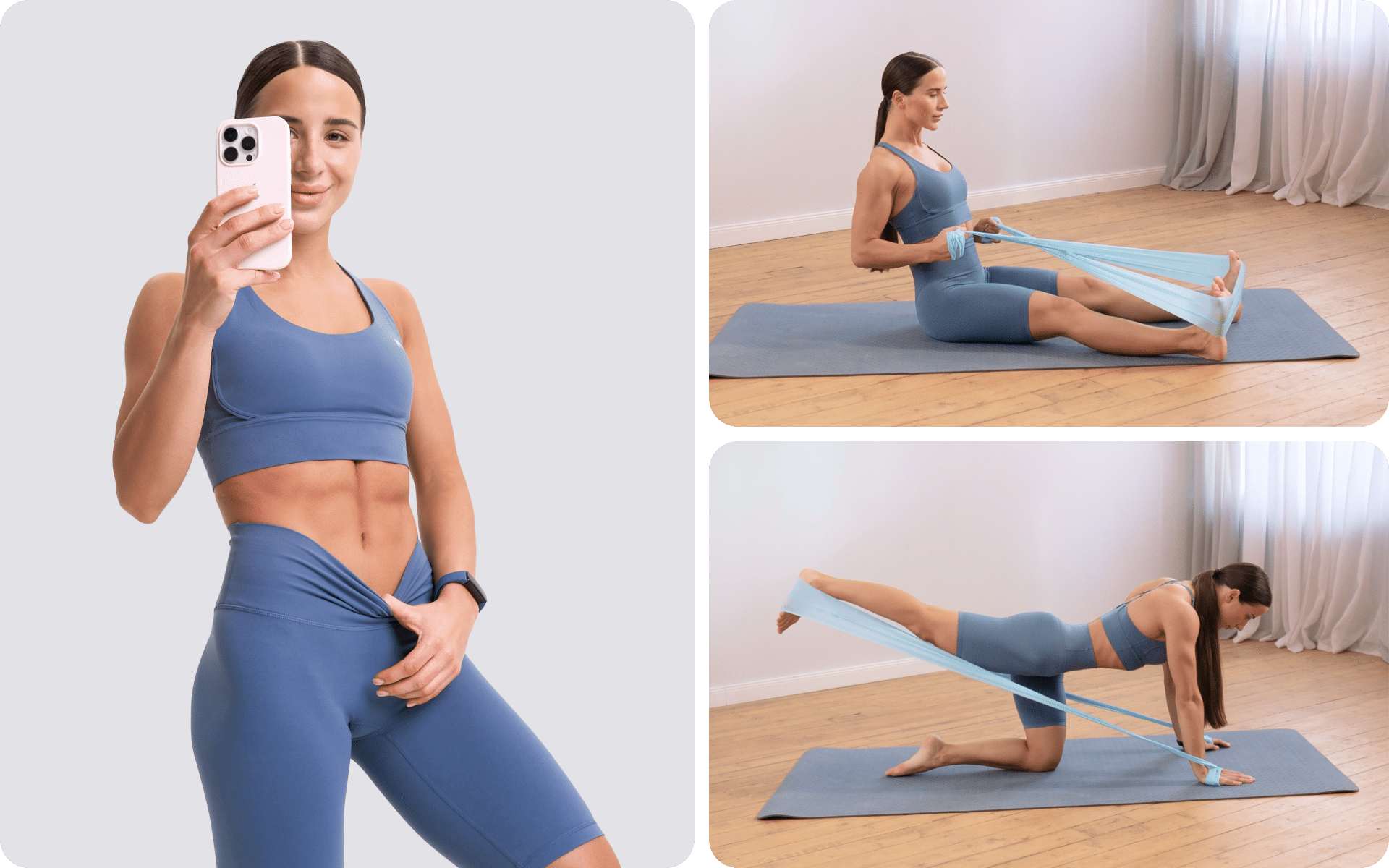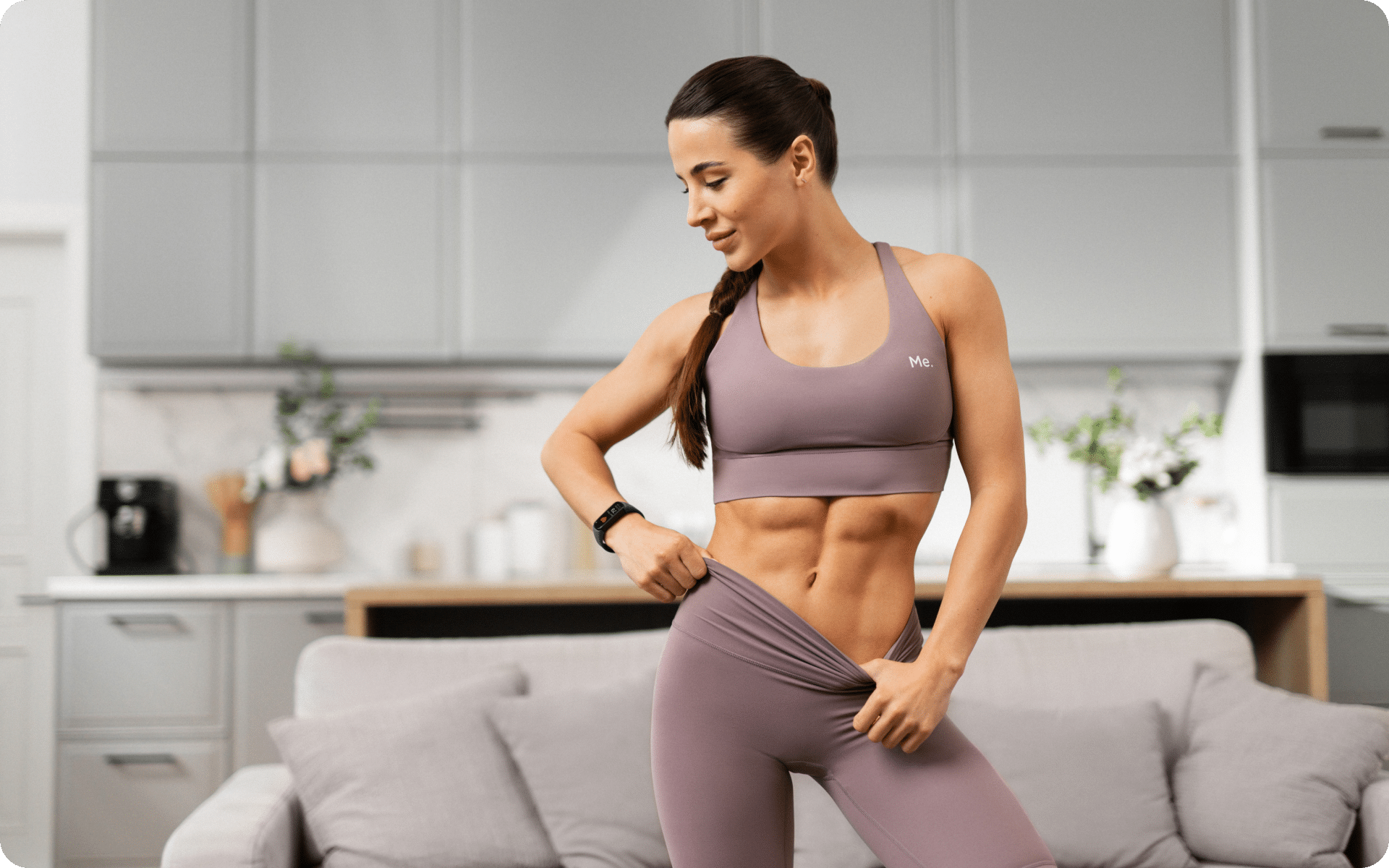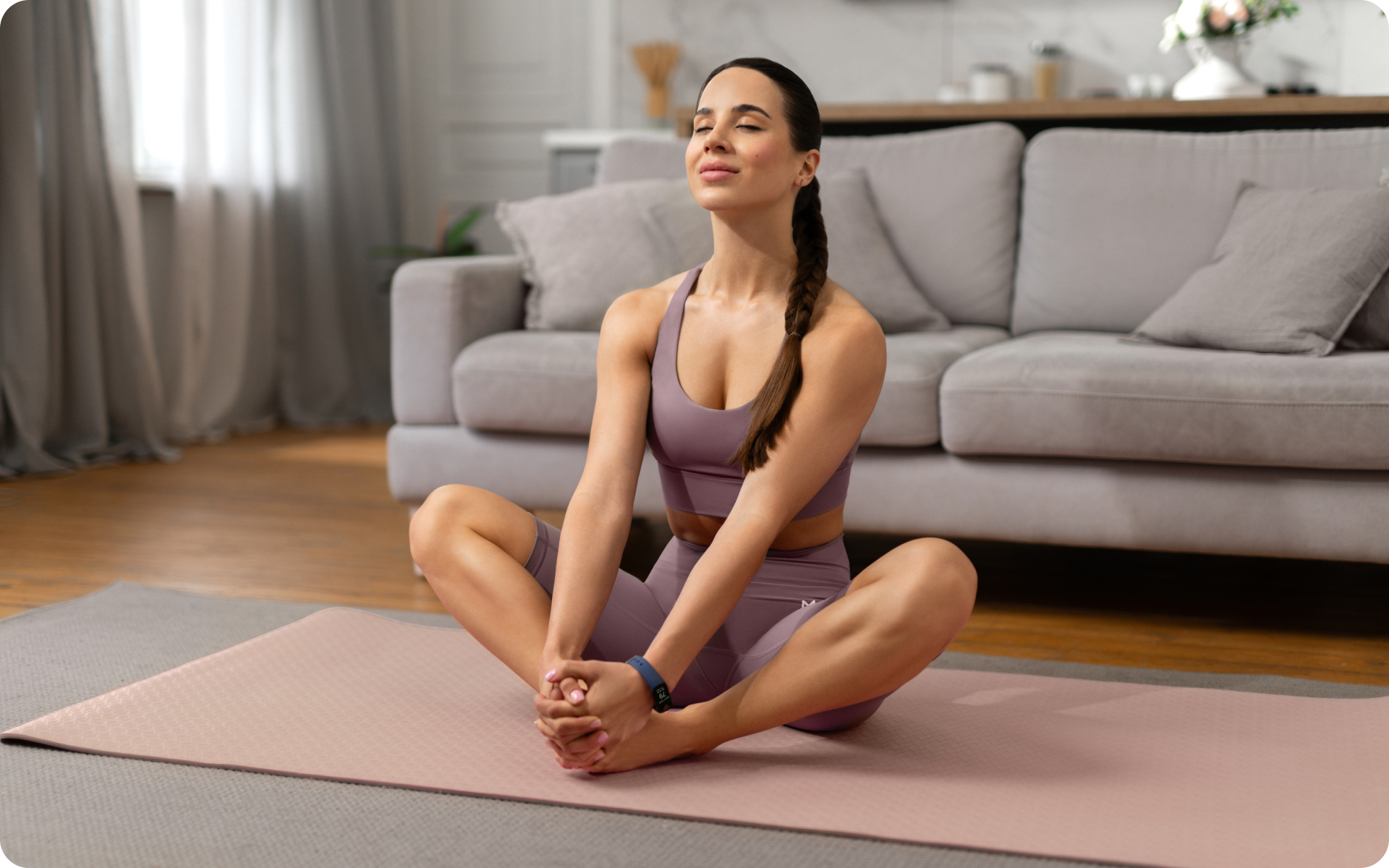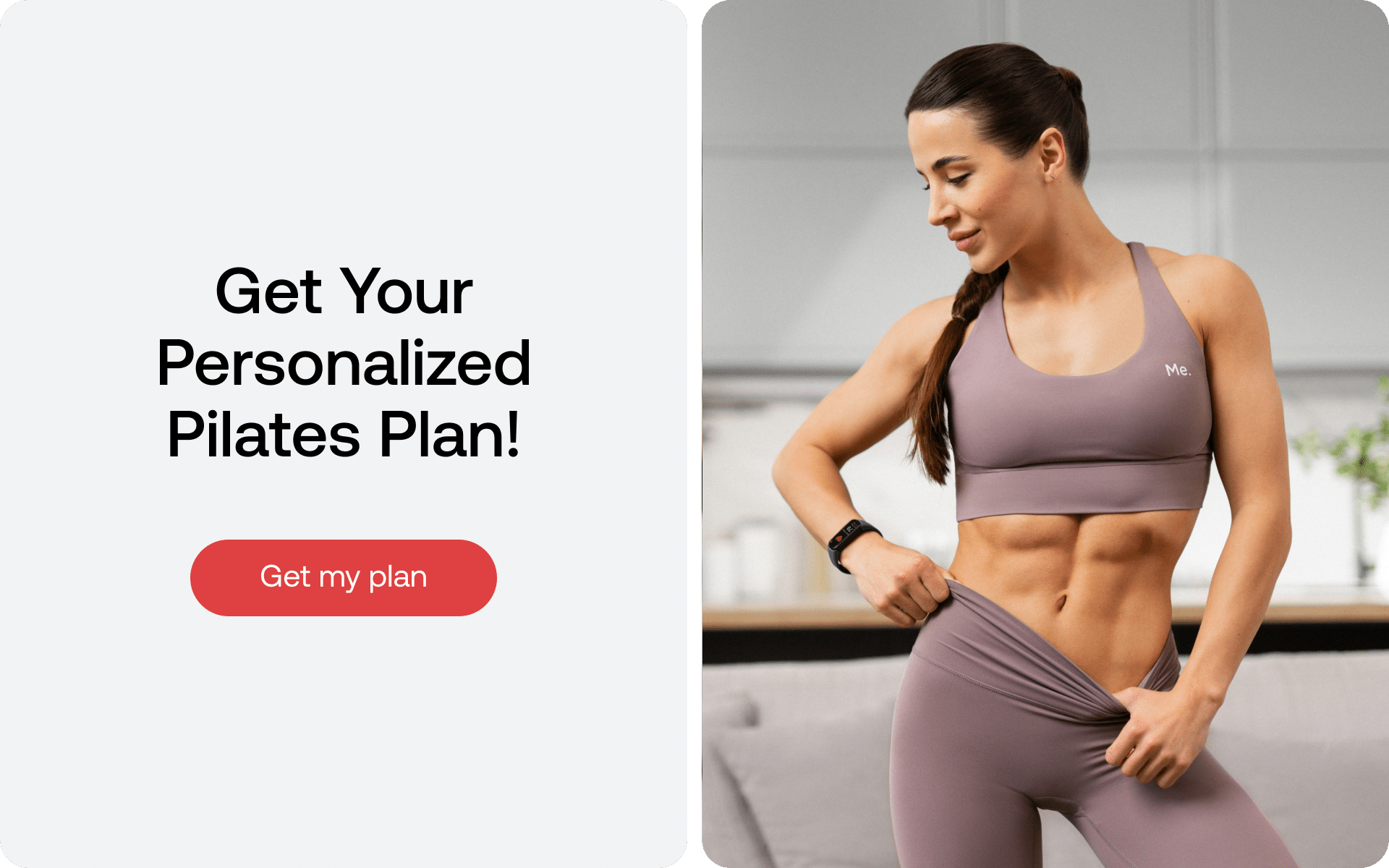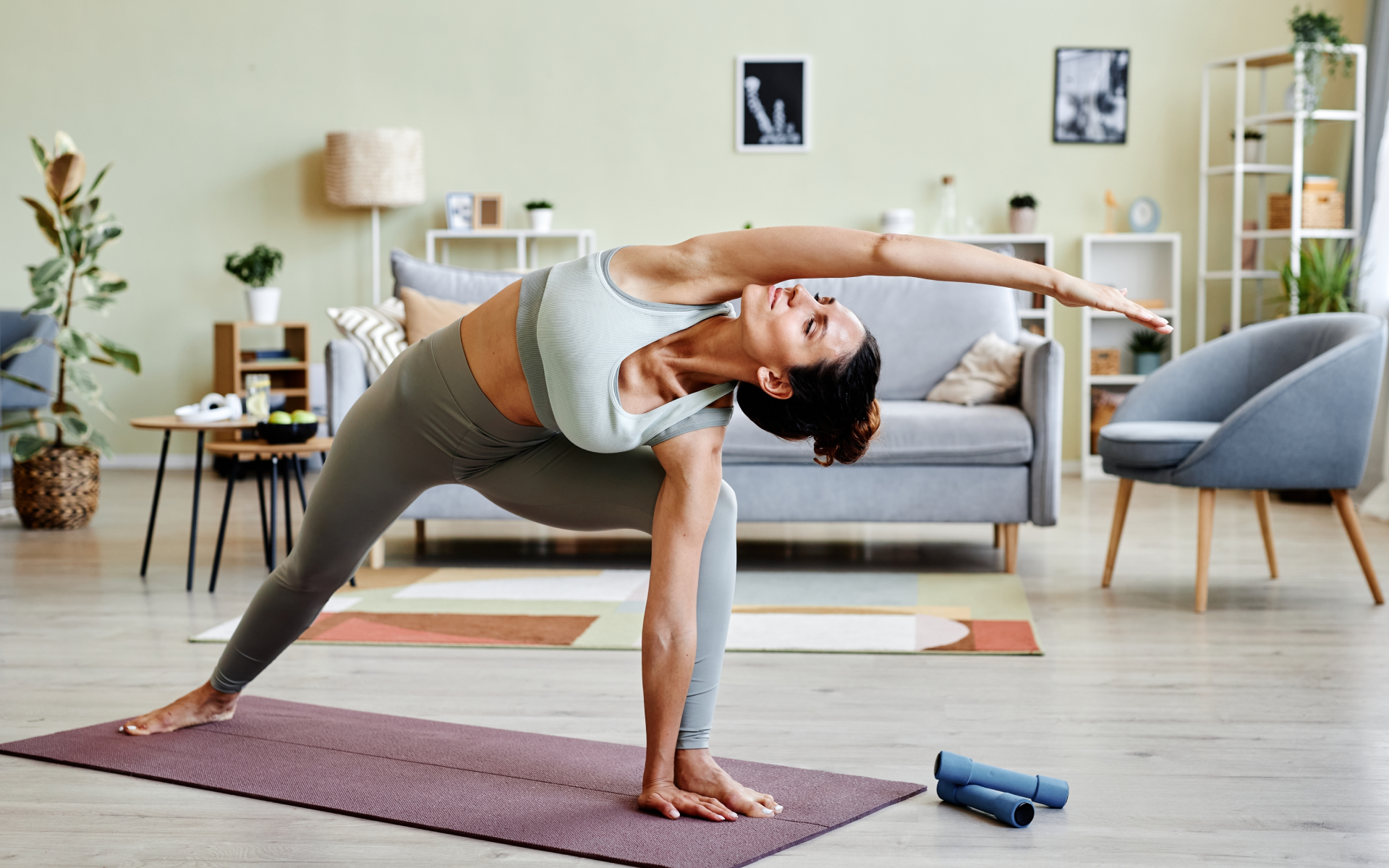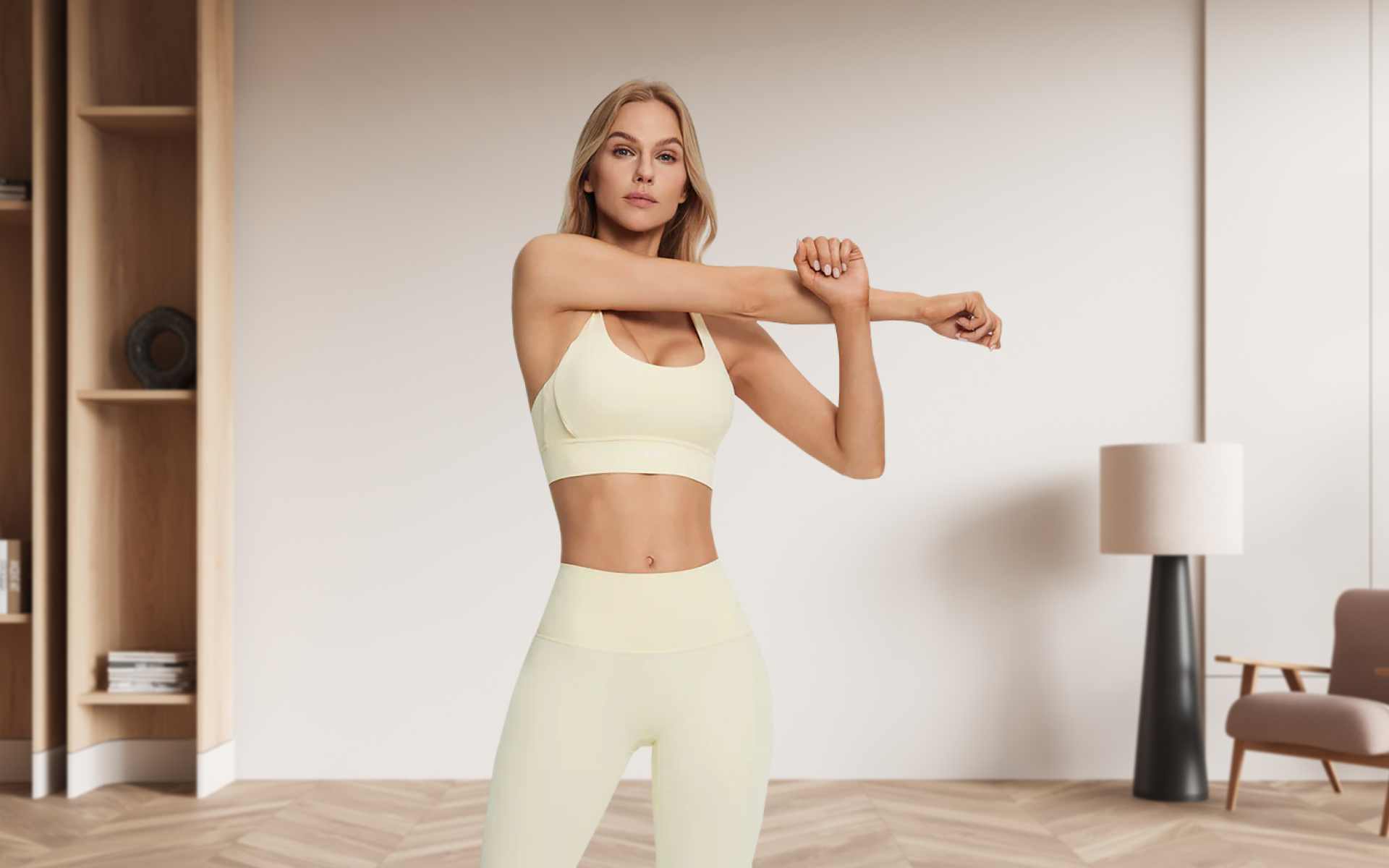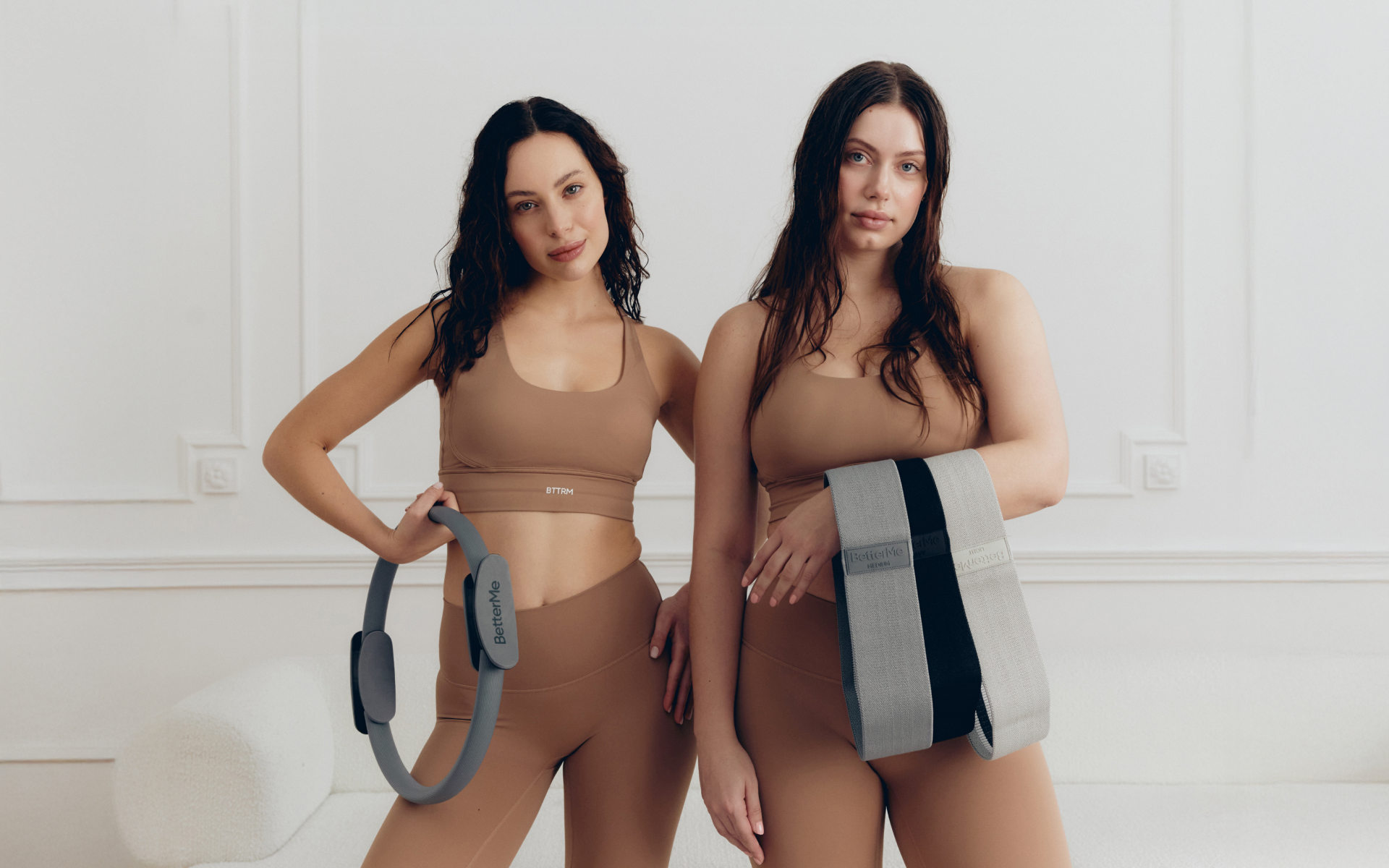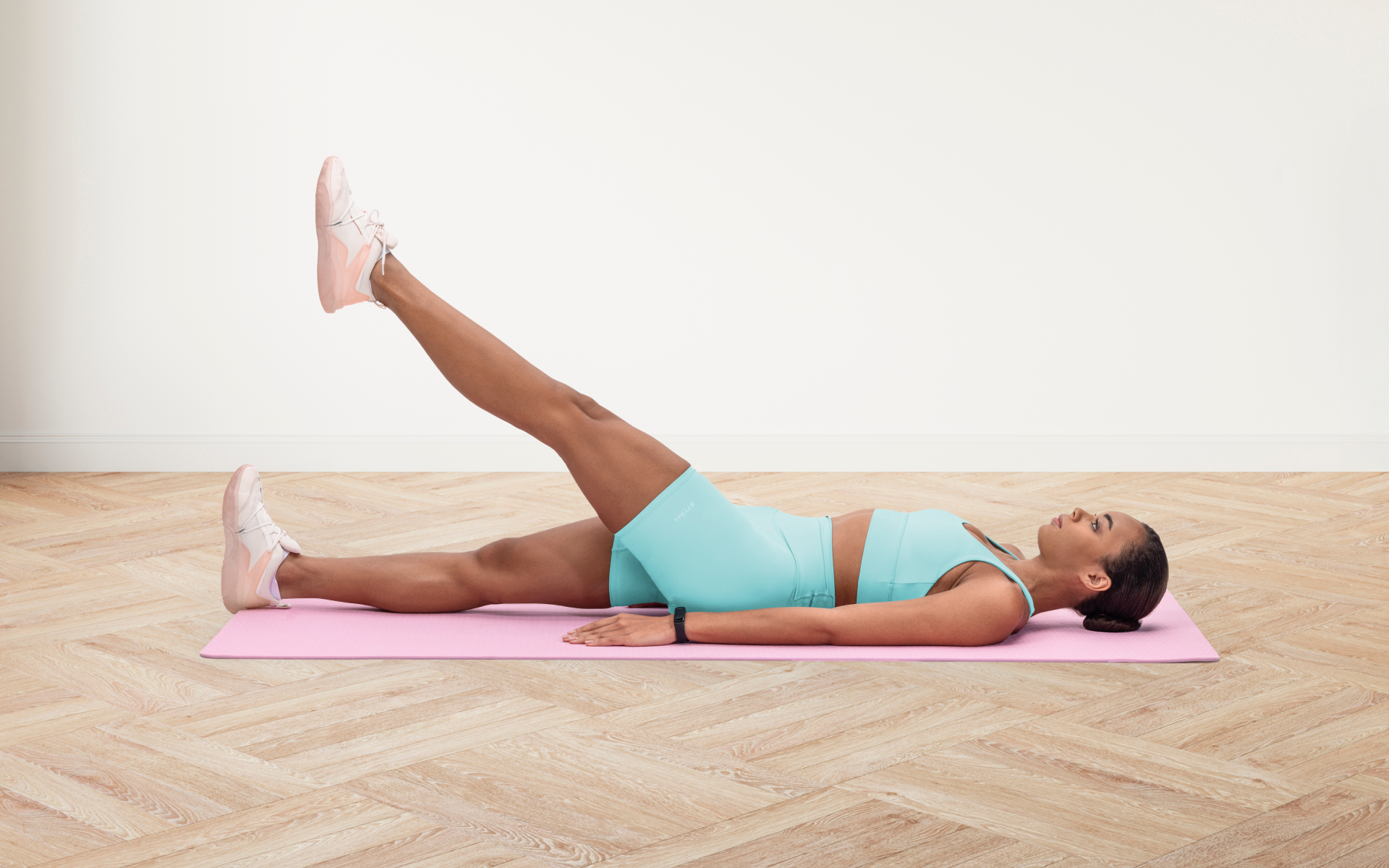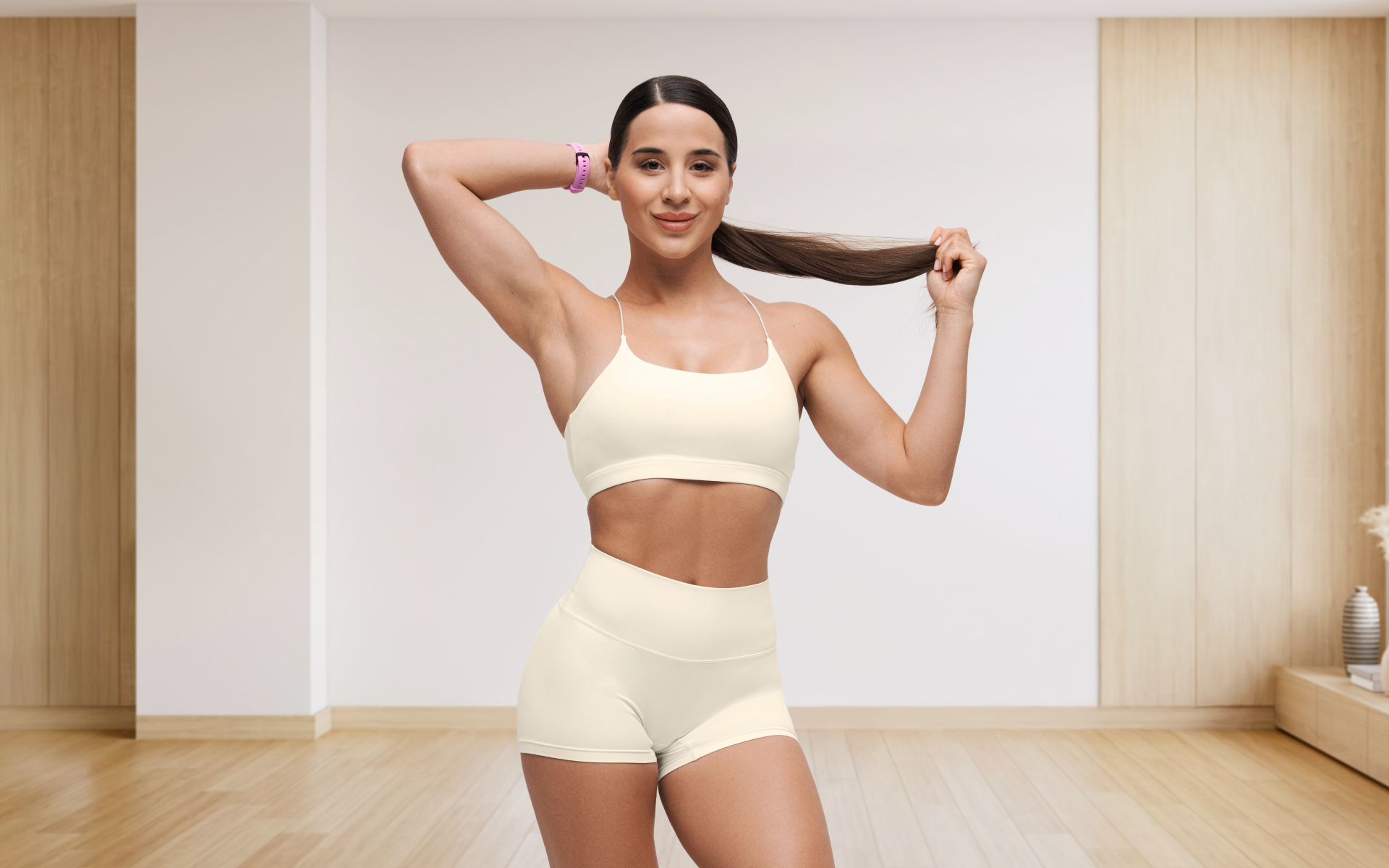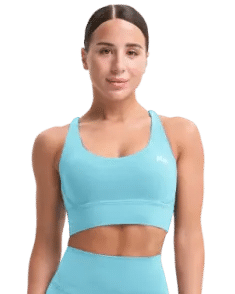Strengthening your core is one of the best ways to get fit. A strong, toned core – which includes your lower muscles, obliques, and abs – keeps your pelvis in alignment, protects your spine, improves posture, and keeps your body stable and balanced.
There are tons of ways to strengthen your core, but adding pilates exercises into your routine is an incredible way to engage your muscles. Here are the ten best pilates exercises for beginners you can try almost anywhere. All you need is a mat and a routine to follow. You will find yourself working on more than just your core.
What Are Pilates Exercises For Beginners?
Pilates is a form of fitness system created by Joseph Hubertus Pilates in the early 20th century and originally referred to as ‘Contrology’ (1). The exercises effectively tone, lengthen, and strengthen your muscles through repetitive, controlled movements (2).
The movements need mental focus, special breathing (supposed to help your body and mind work together), and physical control (2).
Pilates workouts can be performed on a yoga mat, where you create resistance using your body weight or simple equipment such as resistance bands.
So what are the best pilates at-home exercises for beginners? The first step is learning some basic pilates moves, and from there, you can learn new poses and move on to more advanced movements.
Read More: Benefits of Pilates: 18 Reasons To Start This Workout Today
What Are The Benefits Of Pilates?
The potential health benefits of pilates include:
Increases Core Strength
The core muscles of the human body are the pelvic floor, the abdomen, and the deep muscles of the back. These muscles normally support a supple, strong back, efficient movement patterns, and good posture (1).
When your core is strong, then the frame of your body is supported. Core strength is a primary factor in reducing hip and back pain and reducing pelvic floor dysfunction. It is also the area from which all body movements stem, hence its popular nickname ‘powerhouse’ (1).
Improves Posture
Good posture is the main difference between imbalance, weak muscles, back or shoulder pain, headaches, and standing tall or sitting with ease.
Pilates movements improve posture by strengthening neglected postural muscles and bringing awareness to the alignment.
Is For Everyone
The movements can be done by anyone – old, young, woman or man. No matter your physical ability or age, you can do pilates. The focus on developing core strength, the body-mind connection, and proper alignment makes the exercise accessible to all (1).
There are also hundreds of possible modifications and exercises, so pilates poses can be tailored to individual needs.
Can Promote Weight Loss
Pilates workout balances musculature, improves your muscle tone, improves posture, and teaches you to move with grace and ease. All these can make you feel and look very fit.
Combined with a healthy eating plan and aerobic activity, pilates workouts can become prime body toning and weight loss tools.
Integrates Mind And Body
Joseph Hubertus pilates was adamant that this workout was about the complete coordination of spirit, mind, and body. And this is a secret of these movements (2).
When you practice every pilates pose with your total attention, your mind and body unite, bringing forth the most benefit possible from every pose (2).
Strengthens Your Bones
The fact is, the current lifestyle of less moving and more sitting is detrimental to our bone density and our health. Strong bone density usually prevents osteoarthritis and osteoporosis and can affect individuals of all ages (1).
Research shows that pilates movements can effectively relieve pain, increase bone density, and boost the quality of life (1).
Increases Energy
The exercise gets the circulation and the breath moving, stimulates the muscles and spine, and stimulates those feel-good hormones.
Pilates poses achieve all of the above and, because of its low impact nature, it improves your energy.
Is A Whole-Body Fitness
Pilates workouts train your body as an integrated whole. It focuses on core, upper body strength, and lower body as well as posture and flexibility.
Attention to full-body fitness and core support, including the mind and the breath, offer a level of integrative fitness, which is difficult to find elsewhere.
It’s also why the workout is well-known in rehab settings and athletes who find it an impressive foundation for different movements they do (2).
What You Need For Your Workout Session
Here is what you need to prepare:
Get Yourself A Workout Mat
Workout mats offer some protection to your bones and joints during floor workouts, and the foam surface offers grip. And this makes it easier to hold poses, preventing you from pulling a muscle or injuring yourself.
But are mat pilates good for beginners? Mat work is a good choice for everyone, from beginners to advanced, since every pose can be modified to increase or decrease the level of challenge.
Wear Appropriate Workout Clothes
You do not want anything too long or too loose for pilates movements that you could trip on or get caught in. You want breathable, stretchy fabrics and comfy workout clothes that allow you to move freely. Popular choices include:
- Yoga pants
- Tight t-shirts and tank tops
- Capris-length pants or shorts in a spandex-type material
Find A Space
To perform pilates exercises for beginners at home, you need a flat, large open space. Since you’re primarily using your own body to practice basic pilates poses, you can bring your workout anywhere that is convenient. A quiet space is perfect.
Ensure you have enough room to stretch your whole body out on the floor and reach your legs and arms out from the center to all directions.
When it comes to weight loss, progress is made by inches, not miles, so it’s much harder to track and a lot easier to give up. BetterMe app is your personal trainer, nutritionist and support system all in one. Start using our app to stay on track and hold yourself accountable!
Learn Breathing Techniques
One of the major parts of pilates poses is learning proper, controlled breathing as it helps you coordinate your movements, oxygenates the blood, and helps you concentrate. It will help if you practice proper breathing throughout the whole workout session. To breath properly for the poses:
- Lie face up with the neck relaxed and elongated.
- Place one hand on the lower abs and one on your ribs.
- Inhale deeply through the nose and exhale through the mouth.
Know What To Work Toward
To get a better workout and prevent injuries, you need to be able to centre yourself as it helps with relaxation, be aware of proper body alignment and strive to maintain it. Also, pay attention to each motion and control every movement. Choosing minimalist, supportive attire, such as a seamless pilates bodysuit or a studio jumpsuit, can further enhance your focus and help you stay aligned during practice.
Pilates Exercises That A Beginner Can Do
One-Legged Circles
One-legged circles, also known as single-legged circles or leg circles, is among the easiest Pilates exercises for beginners to strengthen the core, hip muscles, glutes and improve pelvic stability.
How To Perform:
- Lie face up or on your back with your palms down and arms by your side.
- Bend your right knee and place your right foot on the ground. Extend your left leg straight up so that it is perpendicular to the ground.
- Next, move your left leg in controlled, large, clockwise circles as if you are tracing circles in the air with the foot. Keep your core engaged, so your lower back stays connected to the ground.
- Next, reverse the circle, now moving in an anticlockwise direction.
- Complete all reps for your left leg, lower it to the ground and repeat with your right leg.
Knee Arm And Leg Reach
The knee arm and leg extension strengthen your core while teaching shoulder stabilization and increasing balance.
How To Perform:
- Prop yourself on your knees and hands. Align your knees under the hips and place hands under the shoulders.
- From there, pull your abs (abdominal muscles) in to stabilize the torso as you extend the left foot and right hand out along the ground until they are straight.
- Now lift your left leg and right arm high while maintaining a stable torso.
- Return to the start position.
- Do 8 to 10 reps on every side for three sets.
If you are struggling to maintain your balance, then lift one leg or one arm separately and develop strength from there. Also, use your exhalation to deepen your abdominal contractions while extending the arm and leg away from each other.
Read More: Is Yoga Or Pilates Better For Weight Loss: A Long-Standing Debate Put To Rest
The One Hundred
The Pilate 100 workout works your core muscles, arms, and legs all at once. Traditionally, the workout was used to get your blood flowing or pumping. Don’t continue this pilates workout if your neck feels strained.
How To perform:
- Lie face-up on the floor with your legs in a tabletop position, meaning that your knees are bent, your shins are horizontal, and your thighs are vertical.
- Lift shoulders, engage your abs, curling the spine, and then lift your head off the ground – do not arch your back.
- From there, pump your arms up and down in the air.
- Breath in and out five times while you pump.
- Do the workout ten times to reach the magic number: one hundred.
Running Planks
Running planks is an explosive pilates exercise that engages multiple muscles at once, helping to increase your blood circulation, improve your flexibility, strength, coordination, agility, and balance.
As a compound workout that uses multiple groups in your entire body, running planks are an effective way to strengthen your core, legs, shoulders, and back. Another benefit of utilizing multiple muscles is getting your heart rate up, helping you burn more calories. How to perform:
- Get into a press-up position with the hands shoulder-width apart directly under your shoulders, head in alignment, abs engaged, and back flat.
- Pull your left knee towards your chest as far as you can.
- Bring your left leg back to its starting position.
- Now switch legs.
- Go slow and alternate for 10 to 20 reps for 3 sets.
Swimming
Pilates swimming workout improves your posture, stability, and mobility and strengthens your back muscles. The workout engages the deep abdominal muscles and challenges the core helping better your body alignment.
How to perform:
- Lie face-up with your legs and arms fully extended.
- From there, raise both legs and arms off the floor and lift your chest and head.
- Flutter your legs and arms and continue alternating sides for the whole duration of the set.
Remember to maintain a neutral spine, elongate your body, and keep your legs and arms fully extended. Breathe slow, maintain your hips, keep your core muscles tight, and upper body stable.
Look at one point on the ground and avoid overstraining your neck. Protect your lower back by firmly pressing the tailbone towards the ground. The moment you lose the alignment, consider taking a break and then continue where you left off.
Hip Bridge
Do you have a pilates ball? If yes, here is one of the pilates exercises with a ball for beginners that deeply works on the abdominal muscles and the core. It also helps slim thighs and hips.
How to perform:
- Lie on the mat and place the ball between your knees.
- Next, gently squeeze the pilates ball so that your pelvic floor muscles contract.
- Now bring your arms overhead onto the floor, palms facing up.
- From there, exhale and then lift hips off the mat into a bridge, while at the same time bringing your arms up towards the sky\ceiling and down to your sides.
- Inhale and then lower your hips and torso onto the mat while at the same time lifting and stretching your arms overhead.
If you wish to free yourself from all the extra pounds that have been weighting you down for way too long, start using the BetterMe app and overhaul your entire life!
Criss-Cross
Criss-cross is one of the pilates mat exercises for beginners that strengthens your lower back and abs while training your core to have more stability.
How To Perform:
- Lie face-up with your legs towards your chest.
- Clasp your hands behind your head, keeping the elbows wide and supporting the base of your skull.
- Next, exhale and squeeze your navel towards the ground, leaving your pelvis in a neutral position and shoulders off the floor. Make sure your shoulder blades are down.
- Inhale and as you exhale, bring your left elbow to the right knee.
- Now inhale as you start to switch to the other side.
- From there, exhale as you extend your right knee to the right elbow.
- Keep on alternating and complete at least 3 sets of 10 to 20 reps.
To get the most from this pilates exercise and prevent strain, avoid hunching shoulders and using elbows and shoulders instead of abs (make the workout about your abs). You must also keep a neutral, stable pelvis as you rotate your spine – no rocking, tilting, or tucking.
Saw
The saw is one of the great pilates stretching exercises for beginners that stretches the deep abdominal muscles, hips, and hamstrings. It also strengthens the muscles of your spine.
The saw can help promote a more stable body with well-controlled movement throughout, improve posture, and is a vital lesson in pelvic stability.
How to Perform:
- Start by sitting up straight by your butt.
- Extend the legs in front of you with feet about shoulder-width apart.
- Reach your arms out to the side, palms facing forward, and even with your shoulders.
- Now inhale, then bring your navel in and twist to the right.
- Exhale as you reach as far as you can towards your right foot.
- Rotate your back arm until the thumb points towards the ground.
- Return to the starting position to switch sides and then repeat.
- Do 3 to 5 times each side 3 sets.
Don’t let the knees roll inward. Make sure not to tilt your neck or around your shoulders. As you twist, focus on keeping even pressure on every side of your pelvis instead of rocking to one side. Your butt should remain on the floor and your hips still.
Single-Leg Teaser
The teaser is one of the challenging pilates exercises for a beginner, but so worth it. The movement helps firm your abs and is a good core strength builder. The muscles worked on include the gluteus maximus of the buttocks, the back muscles, and the abs.
A single-leg teaser also stretches your hamstrings and hips and assists you prepare for a full teaser.
How To Perform:
- Lie face-up with your knees bent and feet flat on the floor\exercise mat.
- Extend your right leg, keeping your knees at the same height.
- From there, bring the arms in an arc overhead.
- Now inhale and nod the chin towards the chest and start to roll the upper back off the mat.
- Continue that move as you reach your toes.
- Pause and exhale.
- Next, roll down, starting with the lower abs.
- Rest, inhale, and repeat, changing the extended leg.
Seated Double Leg Pumps
Seated double leg pump is among the popular pilates chair exercises for beginners that offer the opportunity to build your core from a seated position.
How To Perform:
- Place your feet and heels flexed on your pilates chair’s foot pedal.
- With your legs parallel, continue to sit upright and then pump from your core.
- Try to pump the pedal up and down ten times.
The Bottom Line
If a toned, lean body is what you are after, pilates is the exercise for you. Combine your pilates routine with sessions of cardio exercises, and you will find yourself with the strong, lean, toned body you are after – with great abs as well.
So grab your exercise mat and attempt these ten pilates exercises for beginners – you will not regret it!
DISCLAIMER:
This article is intended for general informational purposes only and does not serve to address individual circumstances. It is not a substitute for professional advice or help and should not be relied on for making any kind of decision-making. Any action taken as a direct or indirect result of the information in this article is entirely at your own risk and is your sole responsibility.
BetterMe, its content staff, and its medical advisors accept no responsibility for inaccuracies, errors, misstatements, inconsistencies, or omissions and specifically disclaim any liability, loss or risk, personal, professional or otherwise, which may be incurred as a consequence, directly or indirectly, of the use and/or application of any content.
You should always seek the advice of your physician or other qualified health provider with any questions you may have regarding a medical condition or your specific situation. Never disregard professional medical advice or delay seeking it because of BetterMe content. If you suspect or think you may have a medical emergency, call your doctor.
SOURCES:
- Application of pilates-based exercises in the treatment of chronic non-specific low back pain: State of the art (n.d., bmj.com)
- Pilates: What Is It? Should It Be Used in Rehabilitation? (2011, nih.gov)
